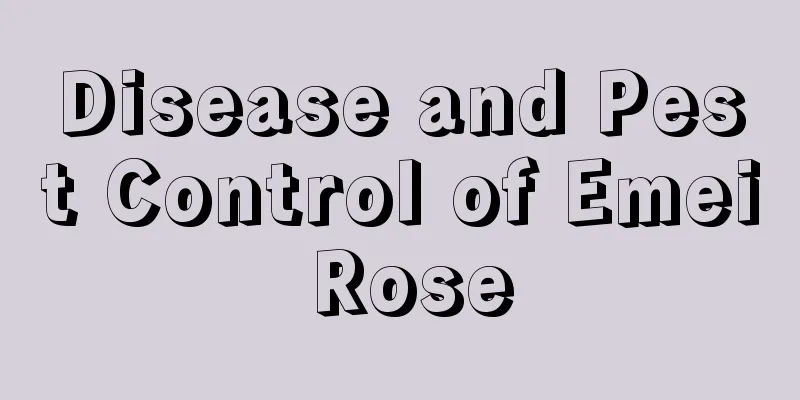Disease and Pest Control of Emei Rose

1. Powdery mildewIt is likely to develop on leaves, petioles and young shoots as well as flower buds. Some irregular white powdery spots will appear on the mature leaves, and then the diseased leaves will slowly turn brown from the tip or the edge of the leaves, which will eventually cause the entire leaf to slowly dry up and fall off. If young leaves are accidentally infected, the infection will gradually expand and become less obvious on the edges. White powdery spots will appear on both sides of the young leaves, and then cover the entire leaf. The leaves also begin to turn light gray or purple-red. If the petiole is infected, its internodes will begin to shorten, the stem will begin to become thinner, and some diseased shoots will appear dry and then covered with white powder. If the flower buds are infected, the pedicels will become deformed, or even die in severe cases. Prevention and control methods: Choose varieties that are resistant to powdery mildew. When pruning in winter, be sure to cut off all diseased branches and buds. In the early stage of the disease, you can apply less nitrogen fertilizer and more phosphorus and potassium fertilizers, so as to improve its disease resistance. In addition, attention should be paid to timely drainage after rain to prevent moisture from staying for a long time, thus reducing the occurrence of diseases. 2. Black spotIf the disease occurs, it usually affects its leaves, petioles and young shoots. When the leaves first start to become sick, some small purple-brown to brown spots will appear on the front. After expanding, they will become some round or irregular black-brown spots. Prevention and control methods: We can choose some drugs such as carbendazim or daconil, and then spray them on the diseased areas. 3. AnthraxThe spots that appear are usually on the edge of the leaves, and are approximately semicircular in shape. The edges of the spots are dark brown, and the color turns brown to light brown in the middle. Later, many small black dots will appear on the spots. This pathogen can usually overwinter on diseased fallen leaves. In a relatively warm and humid environment, the spores will germinate and infect the leaves. Prevention and control methods: You can carry out timely cleaning in late autumn and early winter, collect the diseased fallen leaves, and then burn them together. We also need to strengthen protection and provide appropriate repairs. Treat the denser branches and leaves, maintain good ventilation and ensure that the branches and leaves below receive light. Or you can use some medicines. |
<<: Disease and Pest Control of Rosa bromeliad
>>: Pest and disease control of wind orchid
Recommend
The meaning of Areca palm
1. Four-sided Tengda The plant of Areca palm is t...
Ganoderma lucidum cultivation conditions and breeding environment
Introduction to Lingzhi Ganoderma lucidum is also...
What fruits are suitable for growing in the north?
Fruits are abundant in the north The northern reg...
How to prune miniature coconut palms
Miniature Coconut Tree Pruning Time The miniature...
Where is the best place to plant pepper trees?
Where to plant pepper trees Sichuan pepper trees ...
Hyacinthus soil culture propagation methods and precautions
1. Soil culture propagation method 1. Prepare the...
How to raise azalea in autumn
1. Control watering Moderate watering in autumn c...
Clivia Amaryllis... How does it bloom 3-4 times in a year?
1 Schlumbergera Christmas cactus starts to bloom ...
Do succulents need to be exposed to the sun frequently? (What will happen if succulents are not exposed to the sun for a long time?)
Do succulents need sunlight every day? Sunlight a...
The leaves of the bougainvillea are wilting and falling off when touched. What's going on?
1. Lack of water Reason: If there is too little w...
Taboos on winter cultivation of Cassia ovata
1. Excessive watering Cassia tora is native to tr...
Violet flower meaning
1. Eternal love and beauty, simplicity and virtue...
Which month is best to plant potatoes?
Potatoes, also known as potatoes, sweet potatoes ...
Holly cultivation methods and precautions
1. Maintenance methods 1. Soil: Loose soil, good ...
What to do if the leaves of the tiger plant fall down
1. Reduce watering Tiger Piranha does not need to...









